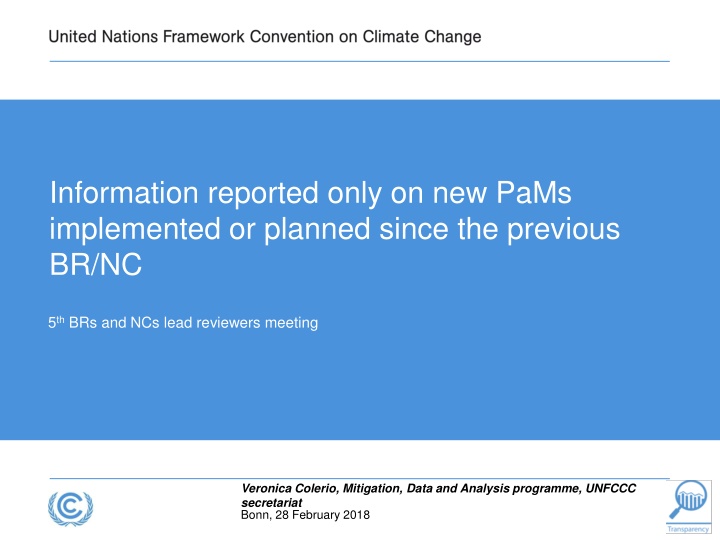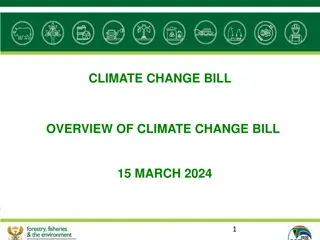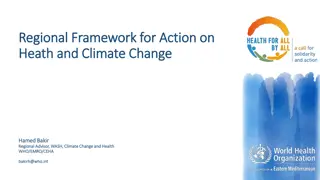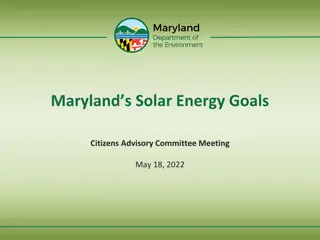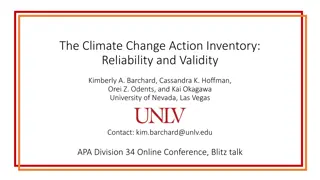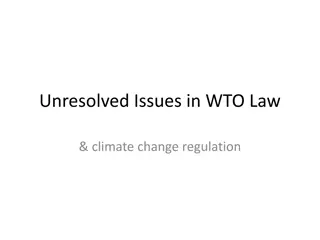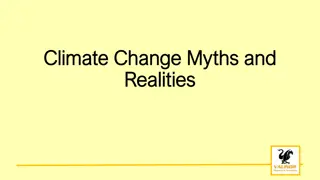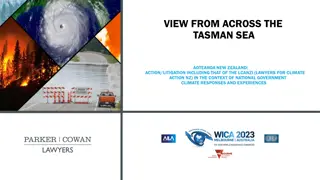Reviewing Practices for New Policies and Measures Implementation in Climate Change Reporting
The report focuses on the review approaches for assessing information solely on new policies and measures (PaMs) implemented or planned since the previous review meetings in relation to climate change mitigation actions. It highlights the importance of transparent reporting of PaMs to achieve economy-wide emission reduction targets, as outlined in the UNFCCC Biennial Reporting Guidelines. The report also emphasizes the role of Expert Review Teams (ERTs) in verifying the novelty and complementarity of newly reported PaMs compared to previous submissions.
Download Presentation

Please find below an Image/Link to download the presentation.
The content on the website is provided AS IS for your information and personal use only. It may not be sold, licensed, or shared on other websites without obtaining consent from the author.If you encounter any issues during the download, it is possible that the publisher has removed the file from their server.
You are allowed to download the files provided on this website for personal or commercial use, subject to the condition that they are used lawfully. All files are the property of their respective owners.
The content on the website is provided AS IS for your information and personal use only. It may not be sold, licensed, or shared on other websites without obtaining consent from the author.
E N D
Presentation Transcript
Information reported only on new PaMs implemented or planned since the previous BR/NC 5th BRs and NCs lead reviewers meeting Veronica Colerio, Mitigation, Data and Analysis programme, UNFCCC secretariat Bonn, 28 February 2018
Introduction In the conclusions of 4th LRs meeting, the secretariat was requested to analyse the existing review approaches to assessing the completeness and transparency of the information reported only on the new policies and measures implemented or planned since the previous NC/BR and to present relevant information as input to the discussions at the LRs meeting in the context of the RPG update.
UNFCCC Biennial Reporting Guidelines (Paragraph 6) Each Annex I Party shall provide information on its mitigation actions, including on the policies and measures it has implemented or plans to implement since its last national communication or biennial report to achieve its economy-wide emission reduction target.
Review Practice Guidance 2017 How to review information only on the new PaMs implemented or planned since the previous NC/BR According to paragraph 6 of the UNFCCC reporting guidelines on BRs, the Party should report on its mitigation actions implemented or planned since the previous NC/BR to achieve its target. The reporting should be clear and, if the Party reported only on new PaMs, it should provide reference to the previous NCs/BRs where the previously existing mitigation actions are described. The ERT should check and verify the references to previous NCs/BRs and ensure that the reported PaMs are indeed new and complementary to those reported in previous NCs/BRs.
ERTs practice during BR2 reviews 43 TRR2s and submissions were checked. Two Parties reported only new or changed PaMs since BR1/NC6 and received a recommendation to provide information on the entire scope of its mitigation actions that contribute to the achievement of the quantified economy-wide emission reduction target. One Party referenced NC6 for textual information on its mitigation actions. No recommendation was provided in this case.
Review Approaches (I) - Example The ERT noted that the BR2 and CTF table 3 include information on a limited number of PaMs only. The previous report presents a variety of PaMs with an implementation period up to 2020 or 2030 which contribute to the achievement of the quantified economy-wide emission reduction target. None of these PaMs have been included either in the BR2 or in CTF table 3, nor have they been reported as PaMs that are no longer in place. During the review, the Party noted that all the above-mentioned PaMs are ongoing and that the information provided in the BR2 focused on new PaMs implemented since the BR1/NC6. The ERT recommends that the Party increase the transparency of its reporting by including information on its PaMs that contribute to the achievement of the target.
Review Approaches (II) - Example In its BR2, the Party stated that the mitigation actions reported in CTF table 3 include only those important PaMs that are new or changed since its submission of the NC6/BR1. The ERT recommends that the Party, in its next BR, provide information on the entire scope of its mitigation actions, that is, those that are in implementation and planned to be implemented, including new PaMs that might be introduced in the period since the submission of the BR2 in order to enhance the completeness of its reporting.
Review Approaches (III) - Example In its BR2 and CTF table 3, the Party reported on its progress in the achievement of its target and the mitigation actions implemented and planned since its NC6 and BR1 to achieve its target. The Party reported that textual information on its mitigation actions, including information on policies and measures (PaMs) implemented or planned to achieve its target, is included in chapter 4 of its NC6. In its NC6, the Party provided information on PaMs presented by sector and by gas, and a description of the main PaMs. Since the NC6, the Party has implemented 11 new PaMs that are included in the overview of the Party s portfolio of mitigation actions provided in CTF table 3, which is consistent with the relevant information reported in the NC6 and the BR2.
Conclusions and recommendations for LR consideration RPG: Add guidance in red According to paragraph 6 of the UNFCCC reporting guidelines on BRs, the Party shall report on its mitigation actions, including on the policies and measures it has implemented or plans to implement since its last national communication or biennial report to achieve its economy-wide emission reduction target. The reporting should be clear and, if the Party reported only on new PaMs, it should provide reference to the previous NCs/BRs where the previously existing mitigation actions are described. The ERT should check and verify the references to previous NCs/BRs and ensure that the reported PaMs are indeed new and complementary to those reported in previous NCs/BRs. If the submission reports only new PaMs and lacks reference to the previous NC/BR, the ERT should make a recommendation to the Party to improve the completeness of its reporting by providing complete and consistent information on all PaMs that were put in place to achieve the target, either by referencing previous NCs or BRs or providing a complete set of mitigation actions in the next BR.
